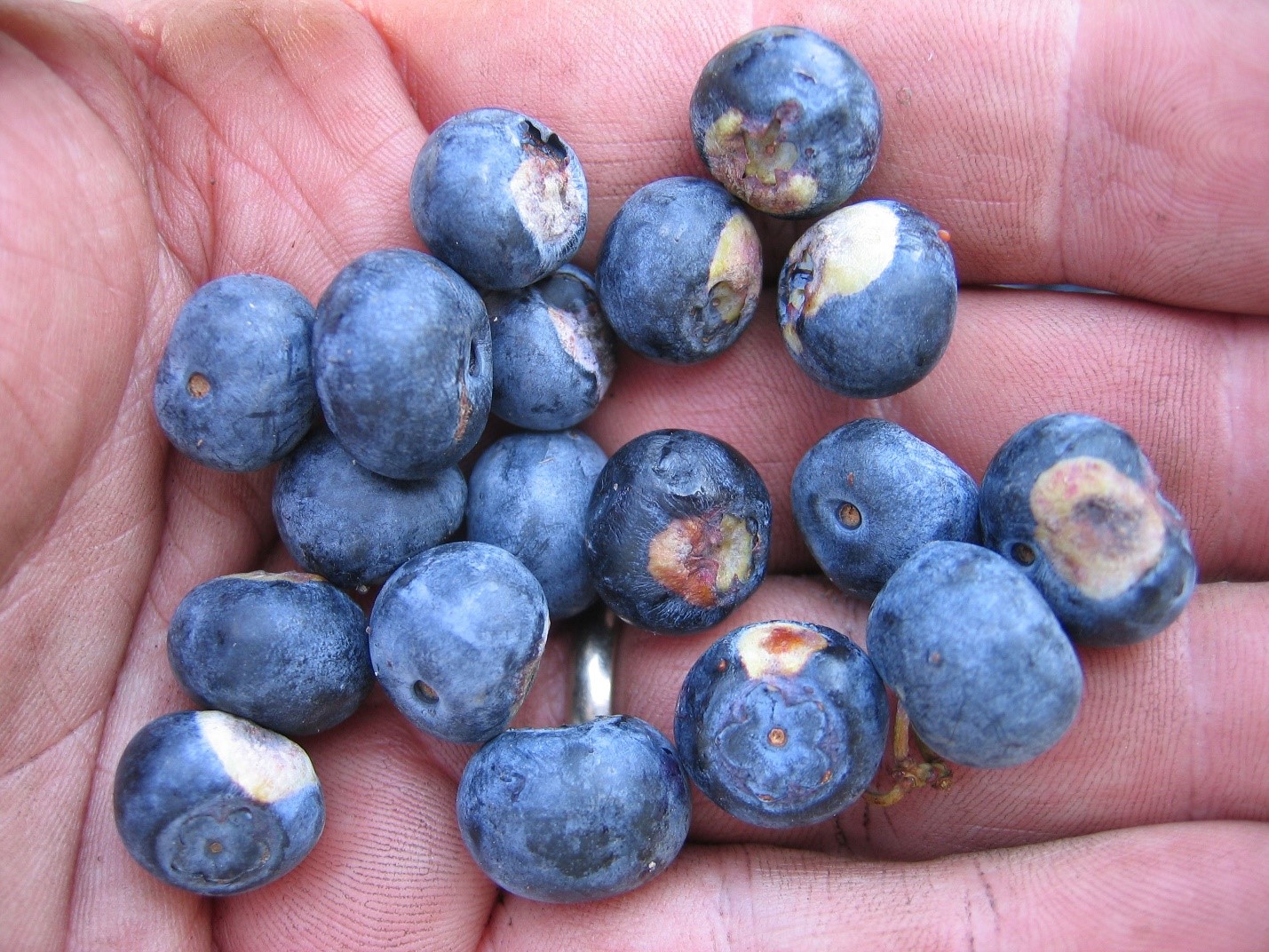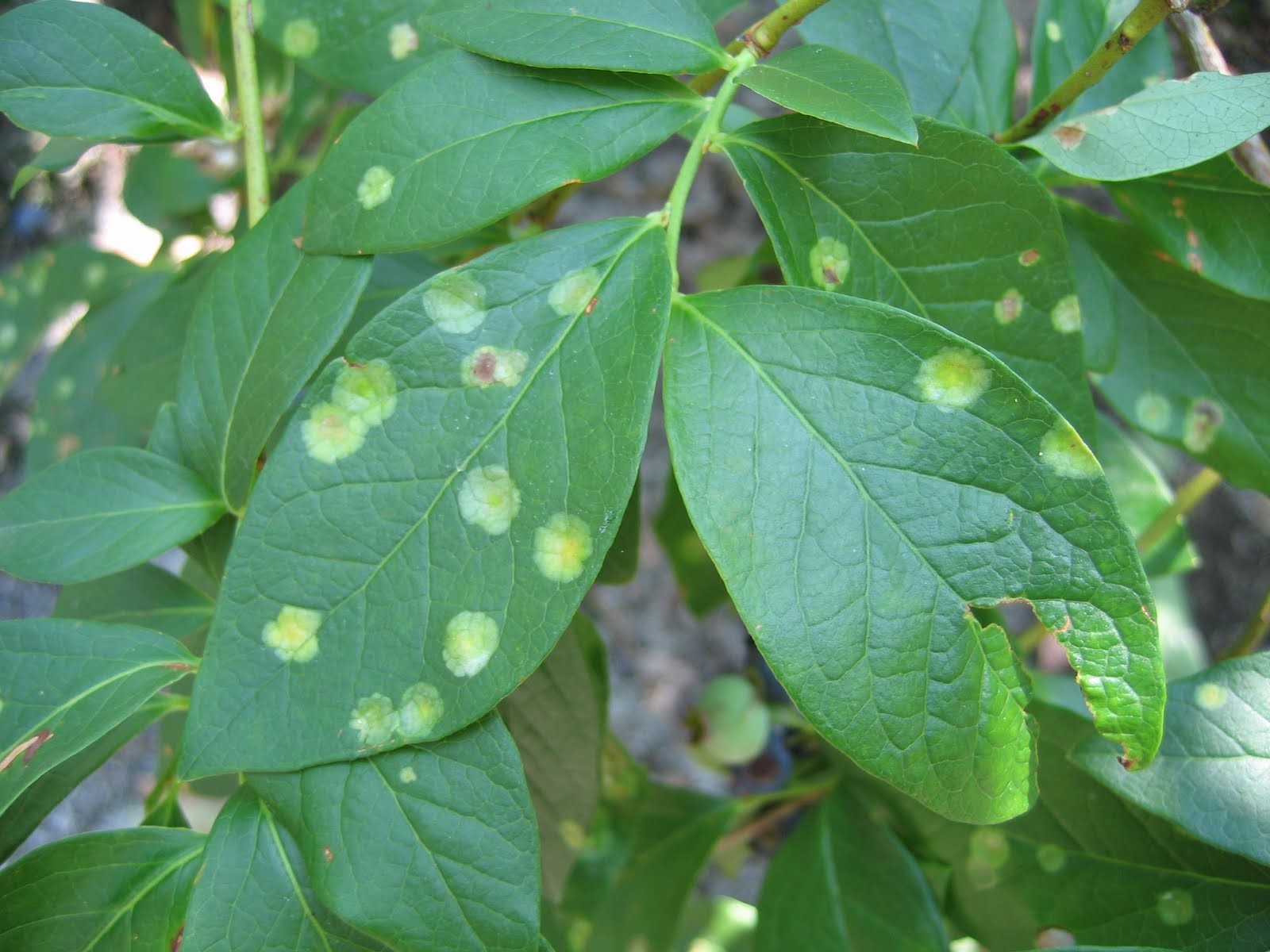
Dormant and Delayed Dormant Lime Sulfur, Sulforix, or Copper Applications
Fed up with intense disease pressure in many of your fruit crops? Here’s a look at options for dormant and delayed dormant lime sulfur and copper applications that can help to decrease spore load and lower incidence of some diseases.
We’re already through a good portion of the dormant period and likely going through some of the last intense freezes here in Arkansas. This means we need to start thinking about what dormant and delayed dormant fungicide applications may be necessary in many of our fruit crops. We usually get a lot of questions about lime sulfur and copper towards the end of a disease-ridden growing year, and considering how bad last year was with diseases such as Anthracnose, these types of applications will be a necessity for many Arkansas producers.
Outlined below are dormant and delayed dormant disease management options for blackberry, blueberry, grape, and peach using lime sulfur, Sulforix, or copper. Please consult the following guides for more specific recommendations and spray schedules:
- SE Caneberry IPM Guide
- SE Bunch Grape IPM Guide
- SE Blueberry IPM Guide
- SE Peach, Nectarine, and Plum IPM Guide
Blackberry
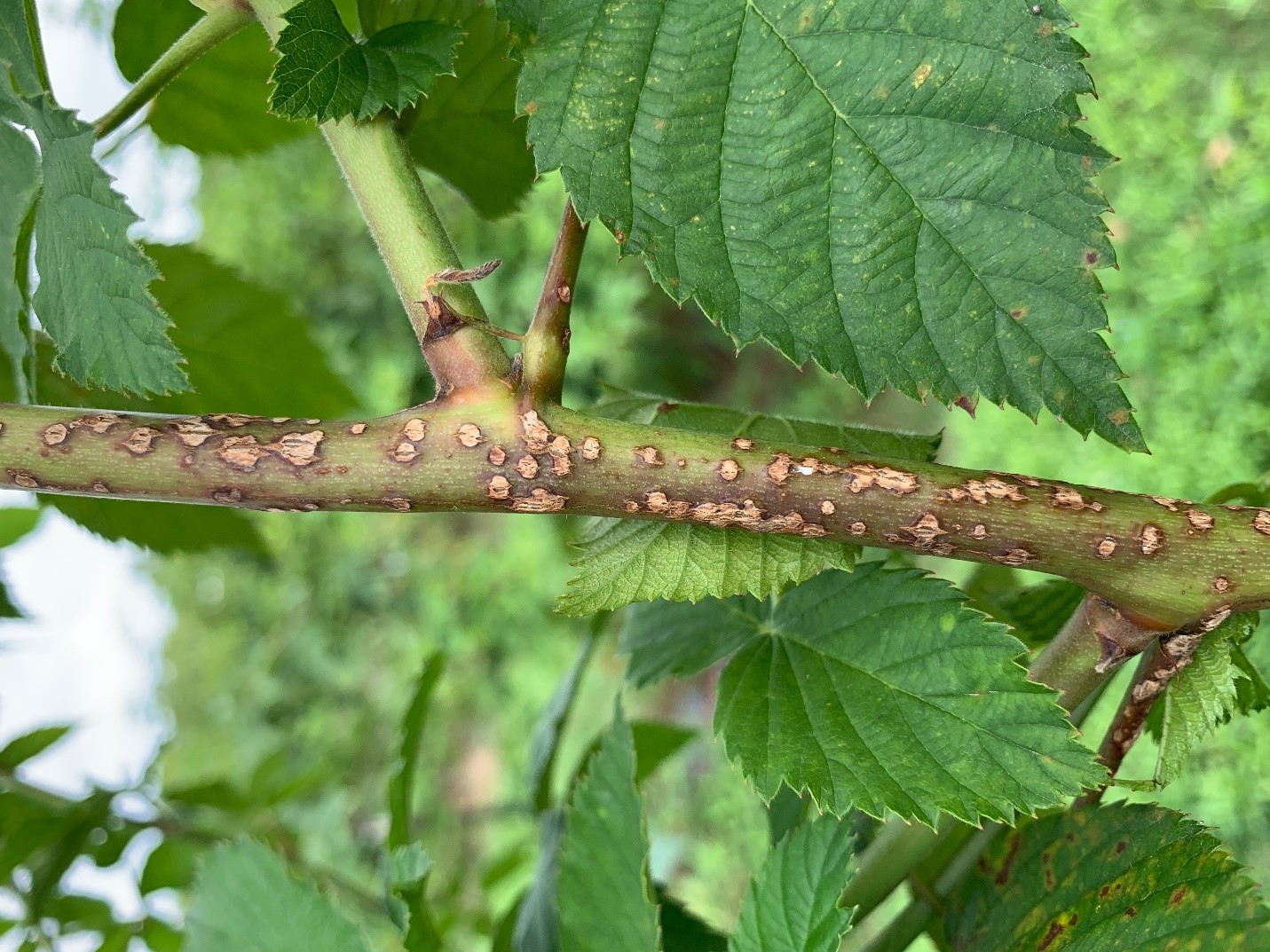
Anthracnose lesions on a 1-year old blackberry cane.
Blackberry delayed dormant applications can be an important tool for Anthracnose, cane blight, and spur blight management. These applications should especially be considered if anthracnose cane lesions are observed during winter pruning, or if leaf or berry damage was prevalent during the previous year.
Applications of lime sulfur, Sulforix, or copper hydroxide should be after bud break (green tip) and before shoots are 3/4 inch long. Early applications will offer less protection and applications beyond 3/4 inch shoots can cause damage to exposed tissue. Applications should aim for 200 gallons of diluted spray per acre (200 GPA). See labels for rate.
Blueberry
Delayed dormant applications before flower or leaf buds break is a great timing in blueberry to manage Exobasidium leaf and fruit spot using either lime sulfur or Sulforix. These products are labeled for Phomopsis cane and twig blight, but do provide suppression of Exobasidium leaf and fruit spot when made at this timing.
Applications of lime sulfur products or Sulforix should be made in the delayed dormant period, 1-2 weeks before flower of leaf buds break. Lime sulfur applications should include 5 gallons of formulated product and 50-70 gallons of water per acre, and Sulforix applications should include 1-2 gallons of formulated product and 100-150 gallons of water per acre.
(Left) Exobasidium fruit spot on blueberries; (Right) Exobasidium leaf spot on blueberry leaves. (Photos: Bill Cline, North Carolina State University Extension)
Grape
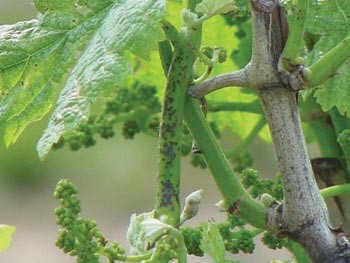
Phomopsis cane spot. (Photo: Turner Sutton, North Carolina State University)
Dormant lime sulfur or Sulforix applications can be a great tool for fields that experience intense problems with Anthracnose or Phomopsis. Some enhanced management of black rot and powdery mildew management could possibly be observed as well. In general, this dormant application should only be considered if anthracnose was a problem the year before. An application of lime sulfur or Sulforix should be sprayed in the dormant period, before bud break and after winter pruning has occurred. A rate of 10 gallons of lime sulfur or 1 gallon of Sulforix should be used in solution with at least 100 gallons of water per acre.
Peach
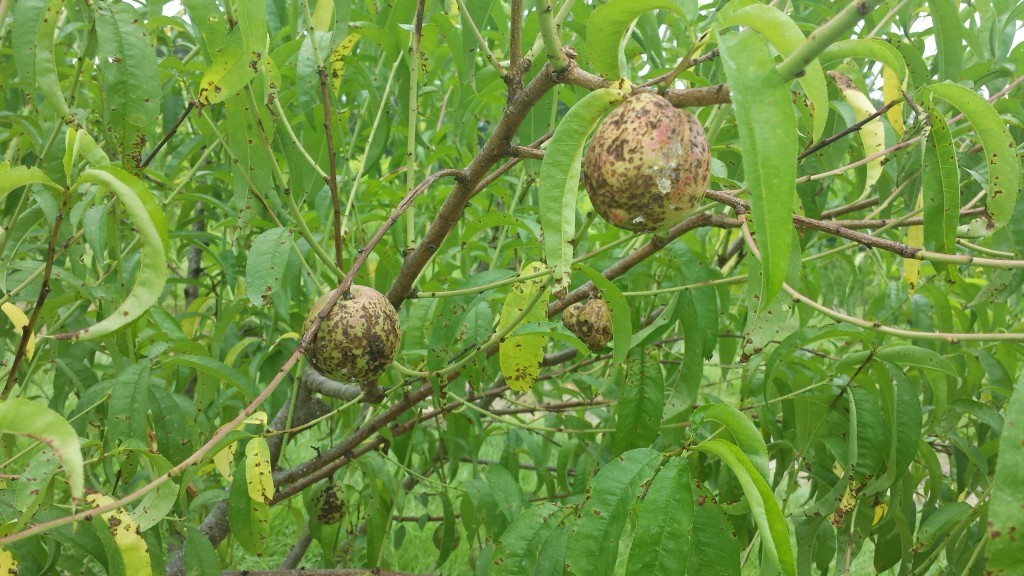
Bacterial leaf and fruit spot. (Photo: Dr. Dario Chavez, University of Georgia)
Dormant and delayed dormant applications of copper are a great management strategy for bacterial spot and leaf curl in peaches. In plantings with known bacterial spot and leaf curl issues, or when using highly susceptible cultivars, these dormant and delayed dormant applications are required to prevent infection from bacterial spot. In areas where disease prevalence is lower, bacterial spot sprays can begin at 1-5% bud swell.
If bacterial spot and leaf curl is known to be an issue in your peach plantings, begin applying 2.0-2.5 lb of MCE from late dormant-early budbreak every two weeks or if a major rain event occurs. MCE is the “metallic copper equivalent,” or the pounds of actual copper active ingredient you need per acre from products that range from 8%-75% copper per pound of formulated product. Begin applying 1-1.25 lb MCE at 1-5% budswell. Apply in a solution that achieves at least 60 GPA.
If bacterial spot and leaf curl is not a major issue, copper sprays containing 1-1.25 lb MCE should begin at 1-5% budswell. See the SE Peach, Nectarine, and Plum IPM Guide for information regarding the full bacterial spot spray rates and MCE recommendations at later growth stages. Always inspect trees for copper injury before making additional copper sprays.
Remember to stay safe using products like lime sulfur which can be hazardous to our health when not used considering the labeled safety requirements. Additionally, the management options talked about in this blog are best used in fields where these issues are known to exist, especially considering the last few years of disease pressure. These are great tools to get a good start on disease management, but may not be necessary in many of the mentioned crops.
